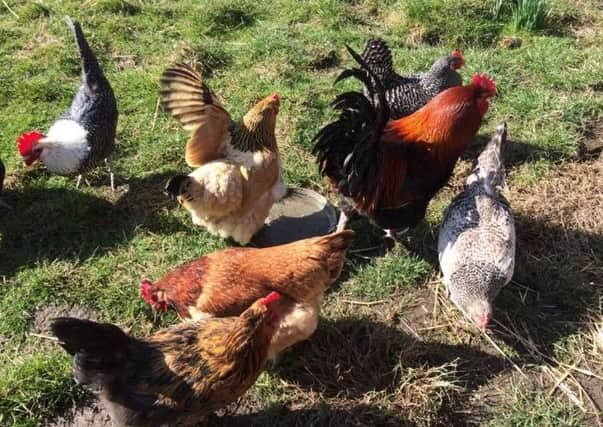Hen care: Establishing a pecking order can get out of hand


We were recently presented with a problem Black Rock Pullet. This hen’s favourite pastime was feather-pecking.
Chickens will always peck at each other to a degree and this is an essential part of establishing a ‘pecking order’.
Advertisement
Hide AdAdvertisement
Hide AdThe ‘top hen’ will peck at others and the lowest bird in the order will be pecked most.
Normally this isn’t a problem, and the lowest bird will simply run away from any unwanted attention. However, if your hens are kept in an enclosed run, simply running away might not be an option and may lead to feather-pecking.
So when our client’s backyard of laying hens started going bald around their vent, tail and head, it wasn’t too hard to identify the culprit – her being the only hen left with an abundance of feathers.
One of the solutions for feather pecking is increasing the space allowed for your hens.
Advertisement
Hide AdAdvertisement
Hide AdThis has an effect in two ways – it decreases the boredom and allows space for victim hens to run away.
As this hen was in a back yard, this, unfortunately, wasn’t an option.
We considered the space allowed for the hen in her coop.
As a guide, a hen should be allowed one to two square foot in their coop, with 7ins to 8ins of perch space to roost.
In this case, the space available was deemed more than adequate.
Advertisement
Hide AdAdvertisement
Hide AdThe client in question had done her research and had provided a number of different ways of alleviating the boredom for the hens, from allowing areas to scratch in to hanging a bundle of greens to be pecked at instead.
However, this was to no avail and still the culprit persisted.
Segregation – where the aggressor is confined for four or five days in a place where she can see, but not get to the other birds – will sometimes make ‘persistent feather-peckers’ forget their ways.
However, again this was to no avail.
Having run out of options, we decided to rehome the offender.
Advertisement
Hide AdAdvertisement
Hide AdWe chose one of our farms – with plenty of space, some larger hens, and a cockerel to ‘keep her in check’.
To date, I am pleased to say that the hen hasn’t plucked another feather in her new environment, although maybe it was the threat of the cooking pot that did it!
Poultry disease alert!
We are now in red mite season so if you haven’t done so already, please check for these particularly nasty parasites.
They live in the coop in cracks and crevices, and can be seen under perches when lifted, or with a flashlight crawling around at night time.
Advertisement
Hide AdAdvertisement
Hide AdThey are intensely itchy – for humans too – and can cause egg drop, anaemia, and even death.
Contact us if you have any concerns about this.
If hens have a heavy worm burden, it weakens them, making it easier for bacterial or viral diseases to take hold.
It is very common for outdoor poultry to suffer from worms due to their lifestyle.
The first sign of a problem can include a change in behaviour, which can be subtle and hard to detect.
Advertisement
Hide AdAdvertisement
Hide AdLater, the hen may hunch up, close their eyes to conserve energy and feeding will become slow and may stop. Weight loss will occur, but is not often detected unless the hen is handled.
There are several types of worms that can infect hens.
The most popular licensed product to treat all types of worms is Flubenvet.
In the month of July only we have a special half price offer on Flubenvet on a first come, first served basis.
Please contact you nearest branch of Alnorthumbria for further advice and information.
Advertisement
Hide AdAdvertisement
Hide AdAlnorthumbria Vets is a mixed practice that treats all species of domestic animals (and a few wild ones as well). Within the practice, the vets have developed special interests so there are separate teams of vets dedicated to the care of farm animals, horses and small animals.